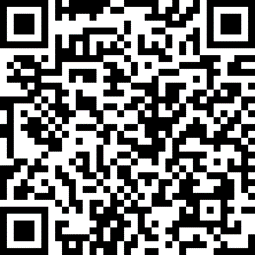胸腺肿瘤 WHO 组织学分型的各型 相对发病率分别为:A:8%,AB:26%,B1:6%,B2:19%,B3:10%,C:13%。[6]Detterbeck FC. Clinical value of the WHO classification system of thymoma. Ann Thorac Surg. 2006;81:2328-2334.http://www.ncbi.nlm.nih.gov/pubmed/16731193?tool=bestpractice.com大多数为早期肿瘤患者(Masaoka I 期:49%;II 期:22%);约三分之一为晚期胸腺瘤患者(Masaoka III 期:19%;IVA 期:7%;IVB 期:3%)。[6]Detterbeck FC. Clinical value of the WHO classification system of thymoma. Ann Thorac Surg. 2006;81:2328-2334.http://www.ncbi.nlm.nih.gov/pubmed/16731193?tool=bestpractice.com[3]Detterbeck FC, Parsons AM. Thymic tumors. Ann Thorac Surg. 2004;77:1860-1869.http://www.ncbi.nlm.nih.gov/pubmed/15111216?tool=bestpractice.com收集来自世界各地的病例分析显示,WHO 组织学分型及 Masaoka 分型在症状发生时间方面类似。
胸腺瘤是罕见的肿瘤,基于美国国家癌症研究所的数据监测、流行病学与最终结果显示其年发病率为0.15/100,000。[1]Engels EA, Pfeiffer RM. Malignant thymoma in the United States: demographic patterns in incidence and association with subsequent malignancies. Int J Cancer. 2003;105:546-551.http://www.ncbi.nlm.nih.gov/pubmed/12712448?tool=bestpractice.com男女发病率一样。[3]Detterbeck FC, Parsons AM. Thymic tumors. Ann Thorac Surg. 2004;77:1860-1869.http://www.ncbi.nlm.nih.gov/pubmed/15111216?tool=bestpractice.com[8]Cugell DW, Kamp DW. Asbestos and the pleura: a review. Chest. 2004;125:1103-1117.http://www.ncbi.nlm.nih.gov/pubmed/15006974?tool=bestpractice.com[9]Okumura M, Ohta M, Tateyama H, et al. The World Health Organization histologic classification system reflects the oncologic behavior of thymoma: a clinical study of 273 patients. Cancer. 2002;94:624-632.http://www.ncbi.nlm.nih.gov/pubmed/11857293?tool=bestpractice.com[10]Kondo K, Monden Y. Therapy for thymic epithelial tumors: a clinical study of 1,320 patients from Japan. Ann Thorac Surg. 2003;75:878-885.http://www.ncbi.nlm.nih.gov/pubmed/12963221?tool=bestpractice.com已有婴儿和老人患胸腺瘤的报告。就诊平均年龄为 50 岁,发病高峰年龄在 35-70 岁。在胸腺瘤患者中重症肌无力的发病率约为 30%;而 10%-15% 的重症肌无力患者会伴有胸腺瘤。[3]Detterbeck FC, Parsons AM. Thymic tumors. Ann Thorac Surg. 2004;77:1860-1869.http://www.ncbi.nlm.nih.gov/pubmed/15111216?tool=bestpractice.com这些患者往往都稍微年轻一些。
相较于胸腺瘤,胸腺癌的发病率更低,但尚无可靠的发病率报道。[3]Detterbeck FC, Parsons AM. Thymic tumors. Ann Thorac Surg. 2004;77:1860-1869.http://www.ncbi.nlm.nih.gov/pubmed/15111216?tool=bestpractice.com[10]Kondo K, Monden Y. Therapy for thymic epithelial tumors: a clinical study of 1,320 patients from Japan. Ann Thorac Surg. 2003;75:878-885.http://www.ncbi.nlm.nih.gov/pubmed/12963221?tool=bestpractice.com该病的年龄分布较广,从幼童时期至成人均有发生,平均年龄为 46 岁。这些肿瘤在男性中稍微更常见一些(男性与女性比率为 1.5:1.0)。大部分为胸腺癌晚期患者。重症肌无力和其他次胸腺综合征很少伴发胸腺癌。
胸腺类癌(神经内分泌)肿瘤是极其罕见的组织学亚型,仅有 200 例的报告。[10]Kondo K, Monden Y. Therapy for thymic epithelial tumors: a clinical study of 1,320 patients from Japan. Ann Thorac Surg. 2003;75:878-885.http://www.ncbi.nlm.nih.gov/pubmed/12963221?tool=bestpractice.com[11]Filosso PL, Actis Dato GM, Ruffini E, et al. Multidisciplinary treatment of advanced thymic neuroendocrine carcinoma (carcinoid): report of a successful case and review of the literature. J Thorac Cardiovasc Surg. 2004;127:1215-1219.http://www.ncbi.nlm.nih.gov/pubmed/15052231?tool=bestpractice.com任何年龄组均可受累。男性与女性比率为 3:1。约 30% 的胸腺类癌肿瘤会伴有库欣综合征。重症肌无力和其他旁胸腺综合征不会伴有各种类癌肿瘤。很少报道类癌综合征与胸腺类癌肿瘤有关。

